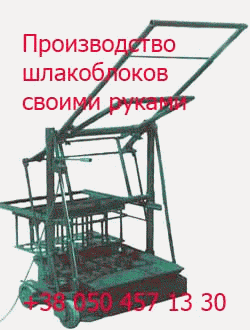The optimum coupling conditions depend on the nature of the diazo and coupling components used. The acidic diazonium salt solution is generally added to the solution of the coupling component. Because, in addition to acid derived from the diazotization process, additional acid is released during coupling, the optimum pH value must be adhered to by […]
Архивы рубрики ‘Industrial Dyes’
Coupling Components
 20 августа, 2015
20 августа, 2015  Pokraskin
Pokraskin The most important coupling components can be divided into the following groups. Where there are several possibilities for coupling, the preferred coupling positions are marked by bold arrows and the other possible coupling positions by ordinary arrows. Anilines, diamin obenzenes (e. g., 26-32). When treated with aniline, diazotized aniline (benzenediazonium chloride) yields, apart from a […]
Diazotization Methods
 20 августа, 2015
20 августа, 2015  Pokraskin
Pokraskin Depending on the basicity and solubility of the amines being diazotized, the following diazotization methods find industrial use: a) Direct Diazotization. The primary aromatic amine is dissolved or suspended in aqueous hydrochloric or sulfuric acid, and a concentrated aqueous sodium nitrite solution is added. An excess of 2.5-3 equivalents of acid per equivalent of amine […]
Diazo Components
 19 августа, 2015
19 августа, 2015  Pokraskin
Pokraskin Diazo components for the production of azo dyes can be divided into the following groups of aromatic amines: Aniline and Substituted Anilines. Methyl, chloro, nitro, methoxyl, ethoxyl, phe — noxyl, hydroxyl, carboxyl, carbalkoxyl, carbonamide, and sulfonic acid groups are primarily used as substituents. Examples: Toluidines, nitroanilines, amino benzoyl amides, and the sulfonic acids thereof. Naphthylamines […]
General Synthesis
 19 августа, 2015
19 августа, 2015  Pokraskin
Pokraskin Almost without exception, azo dyes are made by diazotization of a primary aromatic amine followed by coupling of the resultant diazonium salt with an electron-rich nucleophile. The diazotization reaction is carried out by treating the primary aromatic amine with nitrous acid, normally generated in situ with hydrochloric acid and sodium nitrite. The nitrous acid nitrosates […]
Azo Chromophore
 19 августа, 2015
19 августа, 2015  Pokraskin
Pokraskin 2.1.1 Introduction The azo dyes are by far the most important class, accounting for over 50% of all commercial dyes, and having been studied more than any other class. Azo dyes contain at least one azo group (—N=N—) but can contain two (disazo), three (trisazo), or, more rarely, four (tetrakisazo) or more (polyazo) azo groups. […]
Important Chemical Chromophores of Dye Classes
 19 августа, 2015
19 августа, 2015  Pokraskin
Pokraskin Introduction A principle focus of this book is the classification of dyes by chemical structure. This is certainly not the only possible classification scheme for dyes: ordering by application properties, e. g., naming according the substrate to be dyed is another alternative. Neither of these two categories can be used with the exclusion of the […]
References
 18 августа, 2015
18 августа, 2015  Pokraskin
Pokraskin General References “Dyes and Dye Intermediates” in Kirk-Othmer Encyclopedia of Chemical Technology ,Wiley, New York; in 1st ed., Vol. 5, pp. 327-354, by G. E. Goheen and J. Werner, General Aniline & Film Corp., and A. Merz, American Cyanamid Co.; in 2nd ed., Vol. 7, pp. 462-505, by D. W. Bannister and A. D. Olin, […]
Economic Aspects
 18 августа, 2015
18 августа, 2015  Pokraskin
Pokraskin In the early 1900s, about 85 % of world dye requirements were manufactured in Germany, with other European countries (Switzerland, UK, and France) accounting for a further 10%. Eighty years and two world wars have seen dramatic changes in this pattern. Table 1.2 shows that, in weight terms, the Western European share of world production […]
Equipment and Manufacture
 17 августа, 2015
17 августа, 2015  Pokraskin
Pokraskin The basic steps of dye (and intermediate) manufacture are shown in Figure 1.1. There are usually several reaction steps or unit processes. The reactor itself, in which the unit processes to produce the intermediates and dyes are carried out, is usually the focal point of the plant, but this does not mean that it is […]
 Опубликовано в рубрике
Опубликовано в рубрике 
